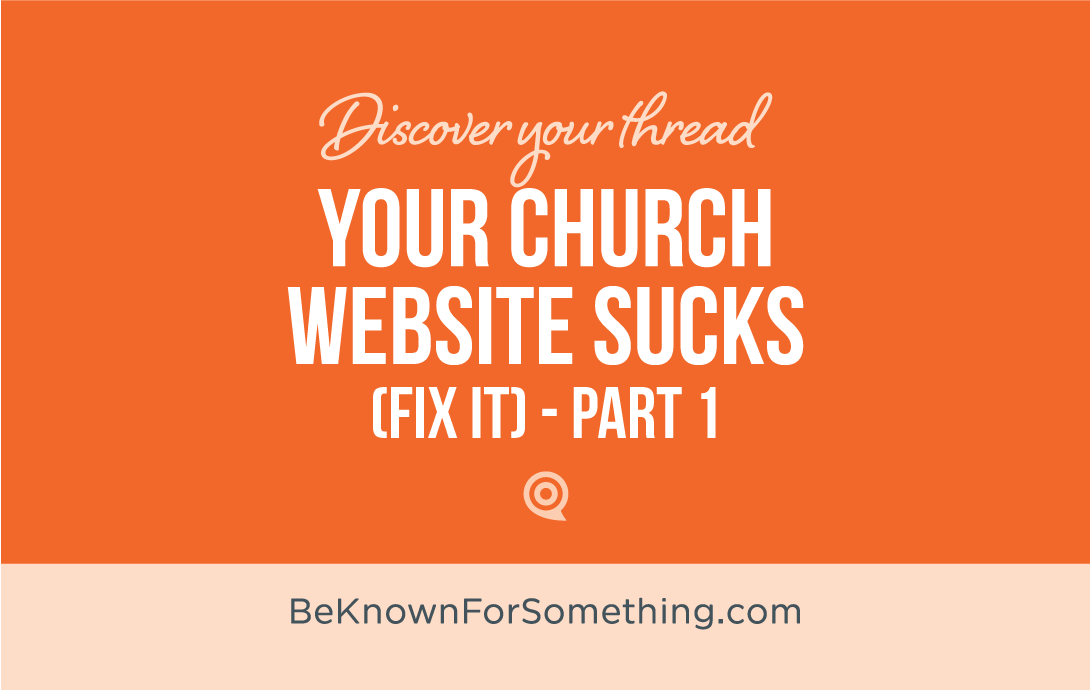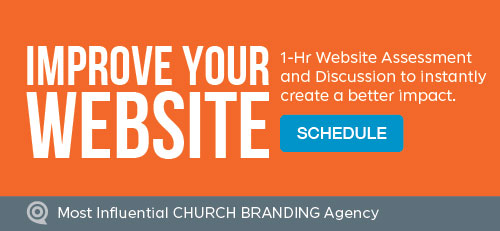11 Clues: Your Church Website Sucks (FIX Them) part 1

It’s pretty simple, we live in a digital world. People rely heavily on the internet to provide information. That’s why your church website is critical for your digital hub communication strategy. If your church website sucks, your communication strategy probably struggles too.
Want to improve? Check these 11 clues to assess how you’re doing — and I’ll give you suggestions for fixing them if necessary.
Before getting started though, here are 3 church website axioms:
- People clicking on your church website want what they want, how they want it (simply), and as quickly as possible. If you don’t deliver, they’ll jump somewhere else for the information. And be disappointed in your church website.
- ~90% of your first-time guests will have visited your website first. The scariest statistic? The percentage who visited your website and decided not to attend.
- Many will “visit” your church and “attend” a service ONLINE before ever deciding to physically attend your campus. Especially post-COVID.
Let’s ensure your website is as good as possible! Be honest with these clues and make a list of improvements you can start today.
NOTE: Are you REALLY DARING? Attend my CFX on-the-spot website assessment in Dallas (Sept 21-22). With my 30+ years of church branding and communication experience helping 1000s of churches across the country, I’ll randomly draw church website URLs from attendees and analyze the website. In front of everyone. You’ll see all of these clues practically!
Here are 11 clues that scream “your church website sucks” and ways to fix them:
- Your location and service times aren’t clear on the homepage. When a guest lands on your website, they need to quickly identify where you’re located: are you within driving distance? Will it be an online connection only? If they want to visit, is there an easy link to directions? Then your service times become critical too. For members, it’s a quick reminder for times. This information should be quick to find — certainly on the homepage as high on the page as possible. Maybe in the header above your main menu?
- The user interface (UI) is more than 3 years old. There have been many advancements in content management systems and interfaces that you’re missing out on. Like the realization that your kitchen is feeling old over time: the appliances, the colors, and decorating quickly scream “I need updating”. Your website UI does the same unless it’s experienced a makeover recently. This impacts the perception of your church. Do what it takes to renovate and update your UI now.
- You don’t have a brand thread. A what? There’s a lot of information on your website. People will quickly want to summarize. Do it for them! Decide what you’re known for and tell them. This 3-5 word tagline introduces your brand story. This thread needs to be woven throughout every ministry so the world sees what makes your church different from others in your area. It’s not everything you do but it’s what you feature. A great thread ensures that you’re known for something needed and relevant to a particular group: you solve something in their lives or help them reach a goal. It starts from identifying personas (people groups in your community who are represented in your congregation), and understanding needs, concerns, and goals. This simple-to-remember and easy-to-use tagline needs to be on your homepage and used as a keyword throughout your site. Don’t have a thread? You’ll be known as a church, just like all the others. Then you’ll be assessed based on architecture, speakers, design, or other things. Or totally ignored since many aren’t seeking church stuff.
- Your content isn’t scannable. It’s rare that anyone actually reads web content. Instead, they look for content snippets they need and are pursuing. So, call out tidbits that are relevant based on the persona and page. Here’s how: people seek a “message match” to the headline (based on what they just clicked) and then scan the page for information. Most won’t read a story or a paragraph. That may come later. Instead, capture their attention first. Concentrate on the first paragraph, then links and bolded information. Remember bullet points draw the eye!
- The content doesn’t change regularly. It should be easy to update your website. If yours isn’t, switch infrastructure systems. Consistently add current information so people know you’re keeping the website up-to-date. Make sure events that have occurred aren’t still promoted and your copyright date in the footer is this year. Those are the regular culprits!
Want the final 6 clues that your church website sucks? Click here.
Want 25 Game-Changing Resolutions?
Related Posts

Christmas Church Communication Strategy: 3 Nativity Lessons
Christmas isn’t just another event on the calendar; it’s a strategic opportunity to communicate the Gospel to a world that’s

3 Church Leadership Skills That Transform Your Ministry
You didn’t accept a call to ministry just to maintain the status quo. You were called to lead to inspire,

How to Create a Church Marketing Strategy That Reaches Your Community
You’ve been called to lead a church that makes a difference in your city. That means developing a clear church


